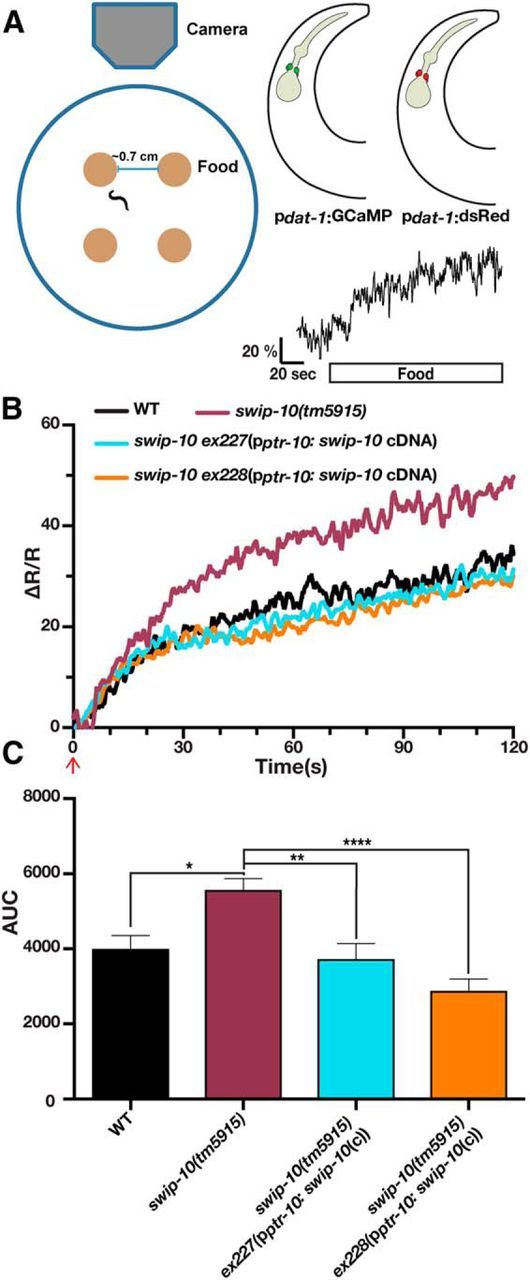Figure 5.

Loss of swip-10 results in elevated DA neuron excitability that is restored by expression of swip-10 in glia. A, Left, Schematic of recording apparatus and assay conditions. Top right, Illustration of background transgenic strain used for CARIBN experiments. Bottom right, Representative trace of wild-type background strain before entering a lawn of food (white bar). Scale bar, ΔR/R of 20% and 20 s. B, Food triggers an increase in DA neuron activity that is greater in worms lacking swip-10. Expression of swip-10 under a ptr-10 promoter restores the magnitude of the GCaMP/dsRed ratio to wild-type levels. Data represent average traces of WT, swip-10, and rescued strains after encountering food (red arrow). n = at least 17 worms per group. The WT strain is XuIs14(pdat-1: GCaMP, pdat-1:dsRed); lite-1(Xu7). C, Area under the curve quantification for B. swip-10(tm5915) displays a significantly elevated AUC from WT levels that is significantly restored by expression of swip-10 expressed with a ptr-10 promoter. Data were analyzed by one-way ANOVA with multiple Bonferroni posttests where *, **, and *** indicate a *p < 0.05, **p < 0.01, ***p < 0.001, respectively. No significant differences were found between WT and strains containing ex227 and ex228.
